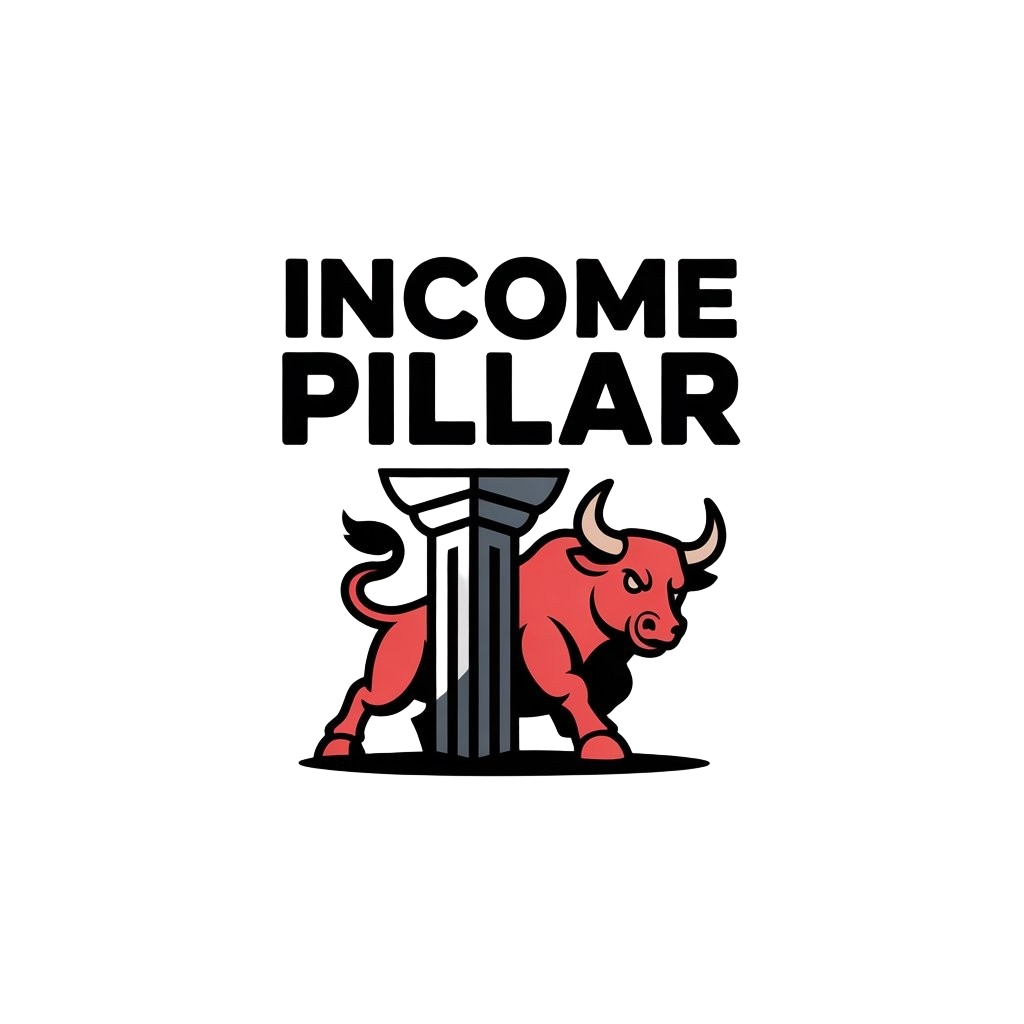Introduction
Social media management tools help personal finance brands handle their online presence better. They make posting, tracking, and interacting easier. Using these tools can save time and improve how your brand connects with followers.
This article covers what social media management tools do, why they are needed, and how to pick the best one for your brand. You’ll find practical advice to grow your personal finance brand on social media.
How Social Media Tools Improve Your Brand
Social media management tools can change the way personal finance brands connect with their audience. They save you a lot of time by letting you plan and schedule posts in advance instead of scrambling to create content daily. Imagine knowing that your entire week’s worth of financial tips or market updates is ready to go—doesn’t that just free up your mind?
These tools also help you track how your posts perform. You get stats on what works—say, which budgeting tips get more likes or comments—and what doesn’t. That feedback loop is kind of crucial. Without it, you might keep posting content that falls flat.
Engaging followers becomes much easier too. Instead of switching between apps or pages, you can respond to comments and messages all in one place. That sort of presence builds trust, which matters a lot when people are thinking about money. You want them to feel heard, right?
Benefits of Scheduling and Monitoring
Scheduling posts ahead of time might sound like a simple convenience, but it’s a real game-changer for finance brands. For example, if you know that people check their social feeds most in the evening, you can queue those posts to go live exactly then, even if you’re busy or offline. You hit their prime time without hovering over your phone.
Watching engagement metrics helps you spot patterns too. Maybe your followers like posts explaining investment basics more than complex market jargon. You can adjust your content without guessing. This way, every post works harder for your brand.
Engaging Your Finance Audience Effectively
Social media tools don’t just help you post—they help you join conversations. Their inboxes gather comments and messages in one dashboard, so you won’t miss a question or feedback. For personal finance, where clarity and trust matter so much, timely replies can make the difference between a follower and a loyal client.
By staying responsive, you’re also building credibility. When followers see you actively engaging, offering help, or clearing doubts, it feels more personal. That kind of trust isn’t easy to get with dry financial topics, but it’s definitely possible with a bit of genuine interaction.
Steps to Choose Your Social Media Tool
Picking the right social media management tool for a personal finance brand isn’t just about finding the cheapest option or the one with the flashiest features. You need to look deeper—ask yourself, what exactly do you want to achieve? Start by clarifying your goals. Are you aiming to increase engagement, simplify content scheduling, or maybe monitor conversations about financial topics in real-time? Each goal demands different tools and capabilities.
Next, take a good look at the features that matter most to your brand. For personal finance, tools that offer robust analytics on post performance, integrations with financial news feeds, or even compliance tracking might be essential. If you often create educational content, look for tools with easy content drafting and approval workflows. Sometimes, you might realize your needs are simpler than you thought—maybe a strong calendar and scheduling feature will do the trick just fine.
When you move to budget, be realistic. Budgets vary widely, and many tools offer tiered pricing. But don’t get blinded by cheaper options if they complicate your workflow later. There’s a real trade-off between cost and usability. It may be tempting to save a few dollars upfront, but if a tool makes your team struggle, you end up losing time, which costs even more.
Ease of use is another piece of this puzzle. You want something straightforward enough that you or your team won’t dread logging in every day. Sometimes a tool with fewer but clearer features trumps an over-complicated one. Test it out where possible. Try demos or free trials—this hands-on experience often reveals more than pages of feature lists.
Finally, don’t overlook customer support. If something goes wrong, who do you call? A responsive support team can save you headaches, especially when dealing with time-sensitive financial content. Check reviews or ask around to get a sense of how support really holds up. It might be that a tool with slightly higher fees pays off in better service.
Scheduling Posts Versus RealTime Posting
Pros and Cons of Scheduling Posts
Scheduling posts can be a lifesaver when managing a personal finance brand. You can line up content days, even weeks ahead, freeing up time later for other tasks—like engaging with followers or researching new trends. It keeps your feed consistent, which is key. For example, if you plan a series on budgeting tips every Monday, you won’t miss posting even on your busiest days.
But, there’s a downside. Scheduled posts can feel detached. If there’s breaking news about tax law changes or market shifts, a pre-set post might seem outdated or out of touch. I’ve noticed that audiences sometimes skip over such content because it lacks immediacy.
Also, strict scheduling could make your feed predictable or robotic. Engagement might dip if followers feel they’re just receiving canned messages rather than authentic communication. You lose that spark real-time interaction brings.
When to Post Content Live
Posting real-time, or live, works best during events that require immediate reactions—like webinars, Q&A sessions, or reacting to financial news breaking right now. It creates a sense of urgency and connection, making followers feel part of a moment, not just passive observers.
Live posts allow for quick back-and-forth. You might respond to comments right away, clarifying points or answering questions. This feels personal and can build trust, which is vital when handling money topics.
Still, going live means you must be ready for anything. Sometimes you’ll encounter technical glitches or off-the-cuff mistakes. That’s part of the charm, but it may not fit everyone’s style or brand voice. Decide if your audience prefers polished, planned content or raw, in-the-moment interaction. There isn’t a one-size-fits-all here.
Checklist to Setup Your Social Media Tool
Setting up your social media management tool can feel like a small hurdle before the real work begins. But if you follow a practical checklist, you can make it simpler and less tedious—trust me, I’ve been there.
First, link all your social media accounts. Connecting your profiles is straightforward, but be mindful which ones you prioritize. For personal finance brands, focus mainly on platforms where your audience hangs out—usually LinkedIn, Twitter, and Facebook. Don’t overload your tool with every possible account right away; quality over quantity.
Next, customize your profiles within the tool. Add profile images, update bios if the tool requires it, and set preferred posting times. Sometimes, these settings are buried deep in menus, so take time here. Think about who you want to reach and adjust your time zones and posting frequencies accordingly.
Planning your first posts right from the start sets the tone. Draft a handful of posts—maybe tips on budgeting, or a recent news update on interest rates. Don’t just wing it. Use the calendar feature in the tool to schedule them, ideally spreading them out throughout the week. Automation saves time, but don’t go overboard; some posts may need tweaking later depending on engagement.
Finally, check if your tool offers analytics or engagement tracking. Set these up early to avoid missing data from the start. Seeing what works helps you refine your content strategy over time. Have you thought about how your posts will fit into your brand’s bigger picture? Setting the foundation now can save headaches later.
Tracking Metrics to Grow Your Finance Brand
When you’re managing a personal finance brand, the numbers you track on social media tell a story, if you pay attention closely enough. Some metrics feel more revealing than others—like engagement rate, which shows how your audience is actually interacting with your content. It’s not just about likes or comments, but whether people are drawn in enough to react or even share.
Follower growth is another key one. It’s tempting to obsess over the raw numbers, but sometimes a slow, steady increase means your content is sticking around in the right way. Click-through rates are crucial too, especially when your goal is to drive readers to your website or a specific offer. They hint at how well your posts translate into actual action.
Using social media management tools, you can gather this data without scrolling endlessly. You might notice a post on budgeting tips gets more clicks but fewer comments than one about debt strategies. That kind of insight pushes you to rethink what you share next, maybe mixing formats or timing differently. Data isn’t a one-way street—it invites you to adjust, to experiment, to find what really works. But sometimes it’s tricky, because metrics don’t always match your gut feeling. And that’s okay. It means you keep learning.
Saving Time with Automation Features
Social media management tools often come with automation features that can really take some weight off your shoulders, especially when managing personal finance content. You might think that staying active means constant tweaking and posting, but automation can keep your brand lively without eating up your entire day.
Setting Automated Posting Schedules
One of the best ways to not constantly hover over your social media accounts is by setting automated posting schedules. Most tools let you plan weeks or even months in advance. You create a calendar where posts drop at specific times—so your content shows up whether you’re working or not.
For example, if you share budgeting tips or market updates, you can schedule those posts to appear on regular intervals. This consistent presence helps you build trust and reliability.
Of course, this doesn’t mean you set it and forget it forever. You’ll want to adjust schedules when new trends or questions pop up, but the daily grind? That’s mostly handled.
Automated Responses and Messages
Dealing with messages, especially questions, can be quite time-consuming. Automation can step in here too—by sending instant replies to common queries or initial greetings. For a personal finance brand, this might mean answering questions about budgeting resources, upcoming webinars, or even basic financial terms.
Sometimes, these auto-responses include links or direct followers to FAQs, which can cut down repetitive tasks. But, you’ll probably still want to jump in for more complex conversations, so it feels balanced and genuine.
These small nudges towards automation save time without sacrificing the personal touch your brand needs. It’s almost like having a virtual assistant who never sleeps but knows when to flag issues for you.
Common Mistakes to Avoid Using Tools
Many personal finance brands lean too heavily on automation when managing their social media. Sure, scheduling posts saves time, but relying on it too much can backfire. When every interaction feels robotic or pre-planned, followers pick up on that lack of spontaneity. Engagement drops because people want genuine conversations, not just automated replies or predictable updates.
Think about it: if you only auto-post without any real-time responses, your audience might feel ignored. Trust erodes quietly over time, especially in finance, where questions often need thoughtful answers. Automation shouldn’t replace being present — it should support you.
Another common slip-up is ignoring analytics or audience feedback. Some brands set their strategy and then forget to check if it’s actually working. But numbers and comments tell stories you don’t want to miss. Without tracking what content resonates, you’re basically flying blind.
Make it a habit to review your analytics regularly, even if briefly. Look for trends in engagement, content drop-offs, or spikes after certain posts. Don’t just focus on likes — pay attention to shares, comments, clicks, and what your followers say.
Ignoring those signs means missing chances to tweak your approach and improve. Sometimes, what you think works may not—trust the data, and listen to your community. It’s tempting to stick with what feels comfortable, but growth often demands noticing where you falter and adjusting accordingly.
Examples of Top Management Tools for Finance
When it comes to managing social media for personal finance brands, some tools stand out more than others. For instance, Hootsuite remains a popular choice. It lets you schedule posts across multiple platforms, monitor conversations, and track engagement all in one place. This can help you keep consistent messaging, which is crucial when discussing finance topics that require trust and clarity.
Buffer is another tool frequently used by smaller finance brands. It’s simple but effective, especially for scheduling and analyzing post performance. The clean interface helps you focus on content without distractions, which might suit those who prefer minimalism over features they don’t need.
Later offers visual scheduling, which is great if your brand leans heavily on infographics or charts explaining financial concepts. It’s tailored more for visual storytelling, which some finance creators find helpful, though it may feel limited if you want deeper analytics.
Tool Features That Fit Finance Brands
You likely want features that build trust and promote reliability. Scheduling is a must-have, so content stays consistent. Monitoring tools that catch comments in real-time also help you respond to questions quickly, showing you’re engaged.
Analytics matter, but not just any numbers. You want to see how well educational posts perform and which topics spark the most interaction. Some tools let you track URLs or conversions, which is handy if you’re promoting courses or newsletters.
Collaboration features can be useful too, especially if you work with financial experts or guest contributors. Tools allowing multiple users to manage a single account without confusion make your workflow easier.
Pricing Options for Different Budgets
Most tools offer tiers that vary quite a bit. For example:
- Hootsuite starts with a free plan for one user managing up to two social profiles. Small personal brands benefit here. Paid plans begin around $20/month and scale up depending on team size and extra features like advanced analytics.
- Buffer offers a free tier too, with basic scheduling features for three social accounts. Its paid plans start from roughly $15/month, adding more accounts and detailed reports. Ideal for growing brands that want straightforward tools without overcomplication.
- Later‘s free plan limits posts but supports one social profile. Paid options rise to about $15-$40/month depending on your posting frequency and some advanced scheduling functions. Better for visual-heavy content creators with moderate budgets.
You might wonder if paying more always means better results. Not always. Sometimes the simplest option suits your stage of growth better.
How to Measure Success Year One
You’ve started using social media management tools, but how do you know if they’re really helping your personal finance brand grow? It’s a question almost everyone asks in the early stages—and honestly, the answer isn’t always straightforward. These tools track a range of metrics, but you need to decide which ones matter most to you.
Start by setting clear monthly and quarterly goals. For instance, aim to increase your follower count by a small percentage each month or boost engagement rates on posts by a few points. You might focus on growing your email list from social media traffic or increasing comments on financial tips. These are measurable, achievable targets that keep you focused.
Every three months, take a close look at your tool’s reports. Compare what worked with what didn’t. Maybe your Monday morning posts get clicks, but your video tutorials flop. Use this insight to adjust your content strategy instead of blindly following the calendar. Remember, growth isn’t linear, so expect some trial and error and be ready to shift direction quickly.
Have you thought about which metrics really display progress for *your* brand? Sometimes raw numbers like followers feel misleading if engagement is low. That’s why tools that break down audience behavior can be useful, revealing patterns you wouldn’t notice otherwise. These reflections can shape smarter, more realistic plans for those crucial first 12 months.
Best Practices for Consistent Branding
When managing your personal finance brand, consistency in voice and visuals is key. Social media management tools can make this easier, but only if you know how to use them well. One practical tip is to rely on templates. These can be saved and reused within tools like Canva or even native post schedulers, so each update has a familiar structure. This makes your posts look polished rather than thrown together on the fly.
Style guides also play a big role. They act as a checkpoint for fonts, colors, and tone. You might find yourself slipping into casual language when discussing budgets, or using too many emojis—style guides keep all that in check. Some tools let you store brand assets directly, which helps keep everyone on the same page if you’re not the only one posting.
Don’t forget about regular check-ins on your brand’s look and feel. Set reminders in your social media tools to revisit branding every few months. This can reveal if your visuals still feel fresh, or your messaging resonates with your audience—something that’s easy to overlook when you’re busy scheduling posts. I’ve learned that what worked a year ago might suddenly feel out of touch today.
Conclusions
Social media management tools can boost your personal finance brand by keeping your social presence organized and active. Choosing the right tool depends on your needs, budget, and style of engagement. Using these tools helps maintain consistent posts and monitor results.
Commit to regular use and review of your chosen tool to get the best results. Track what works and adjust your strategy. This ongoing effort can help your brand grow and connect better with your audience.
























